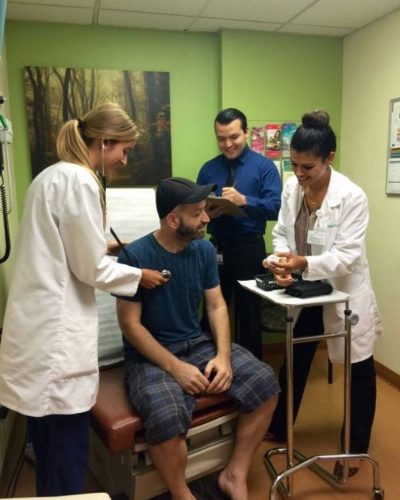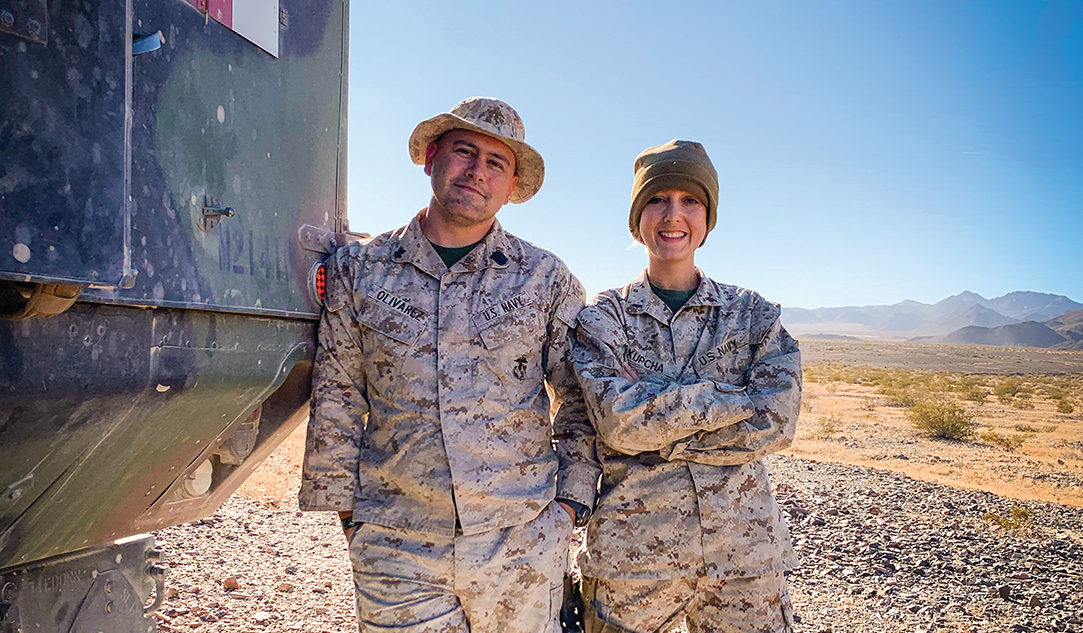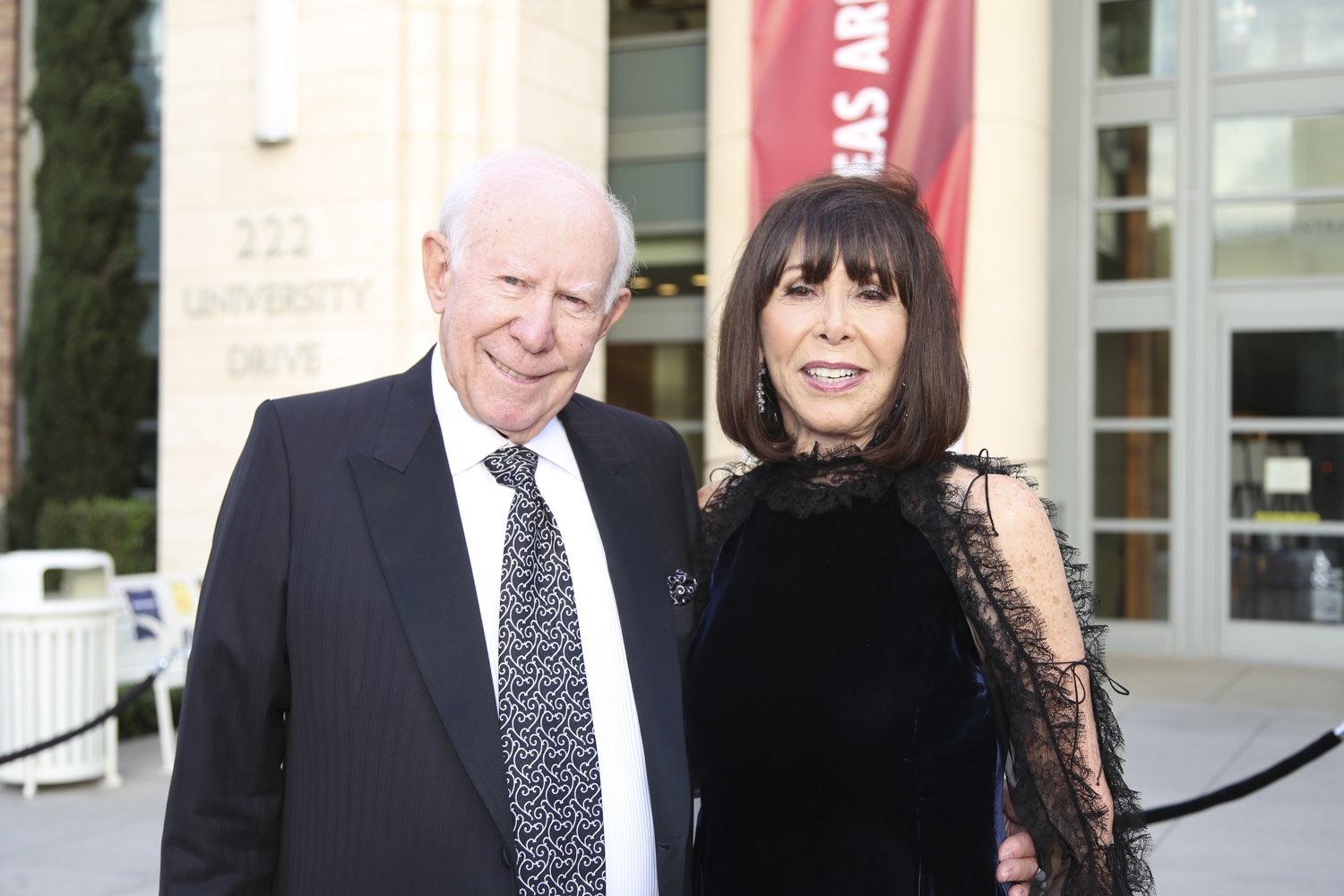The
PA
Solution
All across the United States, there is a shortage of primary care providers. To meet a growing demand for health care, the nation will need to add nearly 122,000 physicians by 2032, the Association of American Medical Colleges (AAMC) reports.
California is no different. In 2019, Gov. Gavin Newsom signed into law an expansion of Medi-Cal that will necessitate more care providers. Although the governor plans to fund the expansion of University of California medical school programs, it will take nearly a decade before this step results in new physicians providing care.
Chapman University is at the forefront of another vital response.
“Investing in the training of physician assistants and other midlevel healthcare professionals is the best way to meet an increasing need for primary care,” says Janeen Hill, Ph.D., dean of Chapman University’s Crean College of Health and Behavioral Sciences.
“It’s faster and more effective to prepare a new generation of physician assistants.”
Physician assistants are the future of health care in the United States. PAs provide skilled, cost-effective care that helps take the pressure off a strained system.
Crean College is home to an expanding Physician Assistant Program, which in December 2018 graduated its first class of 25 practicing PAs. The program projects steady expansion, preparing growing classes of practice-ready healthcare professionals who can enter the medical field after two years of training. PAs often serve in primary care but also work in specialties such as cardiology and dermatology.
“Physician assistants are the future of health care in the United States,” says Michael Burney, director of Chapman’s PA Program, which is housed in Crean College. “PAs provide skilled, cost-effective care that helps take the pressure off a strained system.”
Growing Impact
Orange County is a bellwether for the nation’s shortage of healthcare providers, because projections are that by 2035, 25% of the county’s population will be older than 65.
“As the population grows and ages, there’s a dire need for health care,” Hill says. “Preparing physician assistants not only addresses the care shortage but also targets growing healthcare costs, as it costs less to educate PAs than medical doctors.”
Almost immediately after graduating a year ago, Chapman’s first class of physician assistants was already making a difference in care settings.

“We receive great feedback about the preparedness of our students and graduates,” says Stephanie Saldivar, assistant professor and director of clinical education at Crean College. “Medical groups are approaching us to have students placed in their clinics.”
With the southernmost PA Program in California, Chapman is poised to have an outsized impact on primary care in the region. Upon graduation, 33% of Chapman PAs choose to work in primary care, compared with the national average of less than 25%.
“This is exceptional for Orange County, which is very specialty-focused,” says Anne Walsh, associate professor at Crean College.
Katie Cornella (MMS ‘18) discovered her passion for a specialty – cardiology – during a rotation in Chapman’s Physician Assistant Program. Now she works as a PA at the Orange County Heart Institute and Research Center.
It’s important work. Heart disease is the leading cause of death for both men and women.
Cornella experiences many rewards in providing care, including the chance to spend more time with her patients than is typically possible for physicians. Patients share their gratitude when she details their diagnosis and takes their questions about all the steps in the process.
“That ultimately increases their confidence in the treatment plan,” Cornella says.
Making Specialists Accessible
While the need for primary care is great, specialty fields also are experiencing a shortage of physicians. In many specialties, PAs are able to assist with surgeries, which can reduce costs and streamline the delivery of care.
If you call to schedule a new patient appointment with a specialist who doesn’t have a PA, you could be on a waitlist for a few months, but if a specialist has a PA, you may get in within a week or two,” says Walsh.
Katie Cornella (MMS ‘18) discovered her passion for a specialty – cardiology – during a rotation in Chapman’s Physician Assistant Program. Now she works as a PA at the Orange County Heart Institute and Research Center.
It’s important work. Heart disease is the leading cause of death for both men and women.
Cornella experiences many rewards in providing care, including the chance to spend more time with her patients than is typically possible for physicians. Patients share their gratitude when she details their diagnosis and takes their questions about all the steps in the process.
“That ultimately increases their confidence in the treatment plan,” Cornella says.
Popularity of the Program
Increasingly students are drawn to the PA route for a host of reasons. PAs typically need just two additional years of school and training to earn a Master of Medical Science in physician assistant studies and graduate workforce ready. Medical school takes four years to complete, in addition to at least three years of residency.
“I chose PA as my career because the schooling is expedited and I wouldn’t be so deep into student loans,” Cornella says.
PAs graduate into a job market that values their work. On average, they earn about $117,000 a year, but they can earn as much as $150,000. The bonus is that they typically work regular hours, which is a draw for many young adults.
Chapman PA graduate Casey Kupcha (MMS ’18) was attracted to the work-life balance. “If you enjoy treating people and being involved in clinical decision-making, the PA route is a great option. It gives you more time to spend with patients and your family.”

Caring for the Corps
Casey Kupcha (MMS ’18), above right, provides care to more than 700 patients as a Navy PA assigned to the
Marine Corps Air Ground Combat Center at 29 Palms, California. A commissioned officer, she treats training-related injuries in addition to providing primary care.
“It’s a lot of responsibility – I really love it, though,” she says. “I get to work in clinic, and we take tanks to the middle of the desert and sleep out there. If anything goes wrong, I’m there to take care of them.”
She smiles.
“I even get to ride Ospreys.”
Teaming Up for Better Care
Unlike the competition model at some medical schools, Chapman’s PA program encourages students to work together. After graduation, this collaborative approach can lead to better patient care.
“I consult with my Chapman classmates all the time,” Kupcha says. “If I have a strange EKG, I’ll take a picture and send it to them.”
The teamwork mindset “comes with the nature of being a PA,” Saldivar says.
Saldivar, who also works as a PA in the emergency room of Mission Hospital in Mission Viejo, speaks to the culture of Chapman’s program: “We’re not just training people to get a degree; they’re going to be our colleagues,” she says.
PAs also enjoy a new measure of autonomy. With passage of the California Optimal Team Practice Law, PAs in the state are no longer legally required to be supervised by physicians. Now the collaboration between PAs and physicians is determined at the practice level.
“Loosening supervision will help grow the number of primary care PA practices in rural and underserved areas, where they are needed most,” Dean Hill says.

Simon Foundations’ $9 Million Gift:
Driving Change, Transforming Lives
Future students in Chapman’s Physician Assistant Program will have the opportunity to complete their educations tuition-free thanks to a $9 million gift from the Simon Foundations.
Building on a longtime dedication to helping underserved students pursue college, the new Simon Scholars PA Program extends that commitment to include graduate students.
“Ron and Sandi Simon personify what it means to influence change and transform lives,” Chapman University President Daniele Struppa said in announcing the $9 million gift during the recent Chapman Celebrates gala. “We are honored to partner with them.”
Beginning in 2021, the Simon Scholars PA Program will provide 10 full-tuition scholarships each year for five years, aiding underserved students who want to earn their Master’s in Medical Science (MMS) at Crean College.
What’s more, Simon PA Scholars will commit to working at least three years in Orange County to meet the growing demand for primary care in the community Chapman calls home.
Additionally, PAs will be able to bill for their services, as physicians do, which will allow their work and impact to be tracked.
“More access to PAs means more access to care in general,” Saldivar says. “This is a really an interesting time for PAs in California.”
Cornella agrees. “It’s been my dream to be a part of medicine and give back to the community around me,” she says. “It’s an incredible experience seeing my patients and, according to them, saving their lives.”
Physician Assistants Meet the Challenge
PA training mimics the medical school model and includes at least a year of hands-on clinical training in hospitals, clinics, emergency rooms and urgent-care facilities. Surveys repeatedly show that patients are as satisfied or more satisfied with the care given by a physician assistant compared with that of a doctor.




